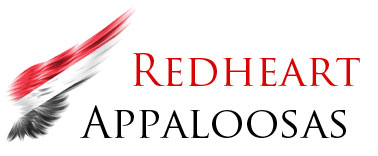A Year With Redheart Result
It is not our desire or goal to cross two homozygous LP Appaloosas, we don’t want to 100% create CSNB horses but when you have two exceptional Appaloosas and all you want is a filly then it’s worth taking the chance. Our 50/50 for gender paid off and we were absolutely delighted to see the safe arrival of the filly Redheart Result on the 23rd February 2021.
The name Result is the meaning behind our goal…and what a RESULT she is, she has the most adorable personality, a small (first maiden foal) but well built and compact and seems to be eventually growing in height!
Today she is a year old and here is a little video of her life here at the stud to date…
Her dam, Talismans Redheart (aka Ghost) has been inseminated with semen from Hevans EV Catorrius (aka Reus) and is is currently 336 days gestation, might we see a sibling on this very day?
Firstly we pray for a healthy mare and foal and ideally a filly to retain, it will be Reus’s first FAHR eligible foal and 100% FPD. We don’t care about the colour or pattern, it will 100% be heterozygous for LP but as Ghost doesn’t carry PATN1, it’s 50/50 if Reus passes his copy over, if he does then we will see spots but if he doesn’t we will see Appaloosa characteristics and the foal will become a varnish roan.
We have three possibilities of colour, black, bay or chestnut, how excited are we!
